Much like bringing up a bitter team rivalry in a crowded sports bar, bringing up the subject of AK variants among gun enthusiasts is an easy way to stir up a heated discussion. Everyone who’s ever owned or fired an AK, despite hundreds of imported and domestically produced types in the wild, seems to have an opinion on which one is the best. And in almost every one of these debates, you’ll hear someone shout, “just get a WASR!” The Romanian-built WASR series has become a mainstay of the U.S. imported firearms category, and it’s regarded by many as the gold standard of affordable AKs available stateside. For decades, Century Arms has been one of the biggest importers of firearms into the United States, and some of this success can be attributed to what the company still calls a “massive demand” for the WASR.
So, does the WASR live up to its legendary reputation? Is it still the AK variant to buy if you’re not looking to break the bank? To shed some light on these questions, we’ll be discussing a rack-grade WASR-10 in 7.62×39 and our experiences from firing, handling, and thorough inspection by a qualified AK gunsmith.

Above: As seen on the cover of this issue, we temporarily dressed up our WASR with some beautiful surplus Russian wood and a Bakelite grip borrowed from Copperhead USA.
About the WASR
Much like anything worth knowing, the history behind the topic is relevant. Century Arms is the importer of the WASR, but these rifles are built by Cugir Arms Factory in Cugir, Romania. Cugir Arms developed out of an iron-processing facility founded in 1799 in the hills of the Transylvania region and has been producing weapons ever since.
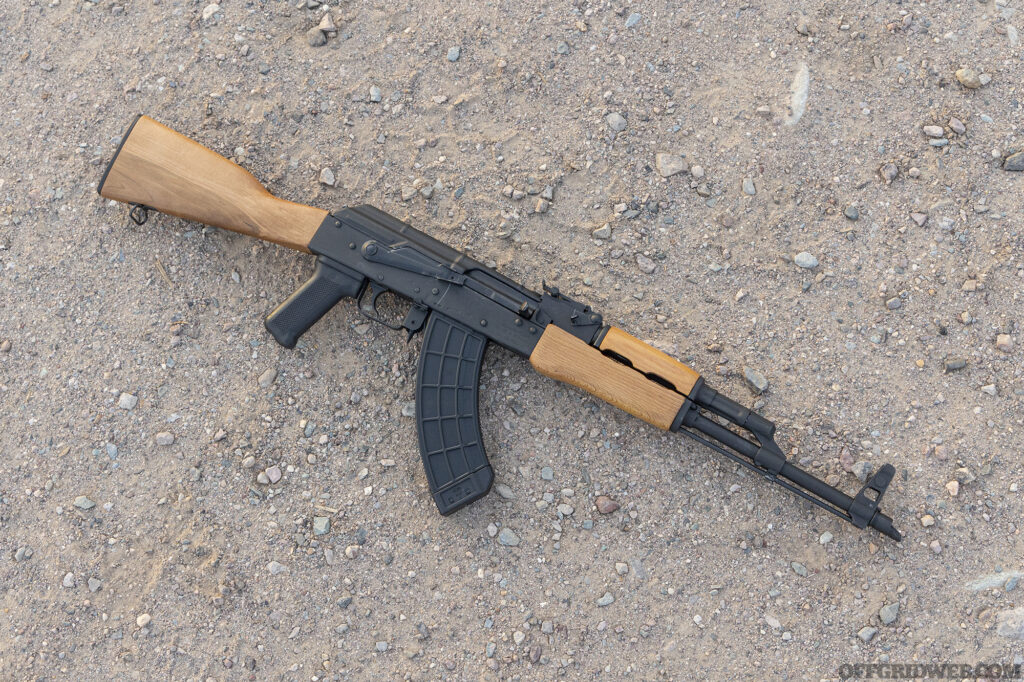
Above: The WASR-10 comes standard with light wood furniture, a black polymer grip, and a US PALM 30-round magazine. What about a Picatinny rail and red dot? Nyet, rifle is fine — we stuck with iron sights.
The name WASR is short for Wassenaar Arrangement Semi-automatic Rifle, a reference to a post-Cold War international arrangement that helped many former Warsaw Pact nations export weapons — everything from tanks and artillery to small arms — to other nations in Europe and North America. The WASR-10 is essentially a semi-automatic version of the Pistol Mitralieră model 1963 (PM md. 63), which in turn was a licensed version of the Soviet AKM. Utilizing a well-known design and simple wood furniture, these Romanian rifles are a no-frills variant of the AKM.
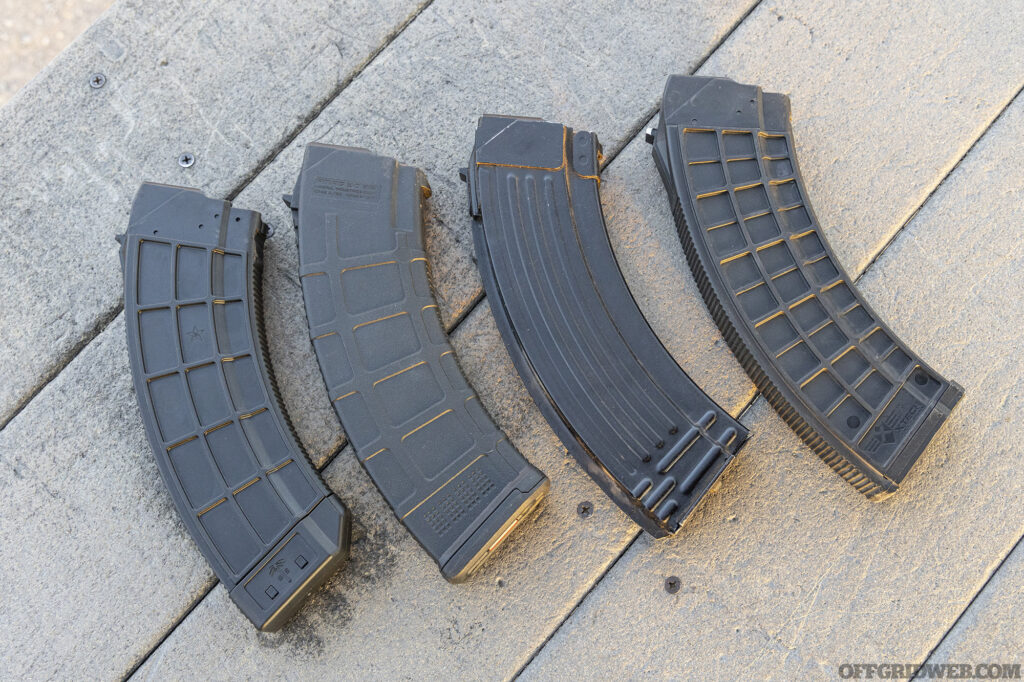
Above: We tested our WASR with four magazines. From left to right: US PALM, Magpul, Bulgarian steel, and XTech.
The current WASR is a product of years of improvements. One of the most notable is eliminating “trigger slap” in current offerings via an aftermarket trigger. This is when the bolt slaps back into the hammer as it travels, which impacts the disconnector/trigger, snapping it back into the shooter’s trigger finger. This has to do with clearances inside the receiver and, thankfully, is pretty uncommon on modern AKs, such as the current WASR-10 offerings from Century.
A Closer Inspection
The WASR-10 we received looked fine when we removed it from its box, as we’d expect from a basic imported AK. However, unlike an AR-15, many parts of the AK must be pressed and/or riveted together — if this is done improperly, an AK can be in for serious problems down the road. To check the baseline condition of our WASR, we had local AK expert Josh at Copperhead USA in Tempe, Arizona, look it over before we commenced testing.
Something that cannot be overstated is that AKs often require real gunsmithing, as opposed to other platforms where you can swap internal components using simple hand tools. AK tolerances are all over the map and vary from country to country and even from the same factories at different times. Several companies offer build classes on AKs where you can dive deep into these differences and the things you need to be aware of, and Copperhead does a great job of these classes. If you’re considering getting into the weeds of the platform, it’s worth the time and money to invest in learning to be competent rather than simply enthusiastic.
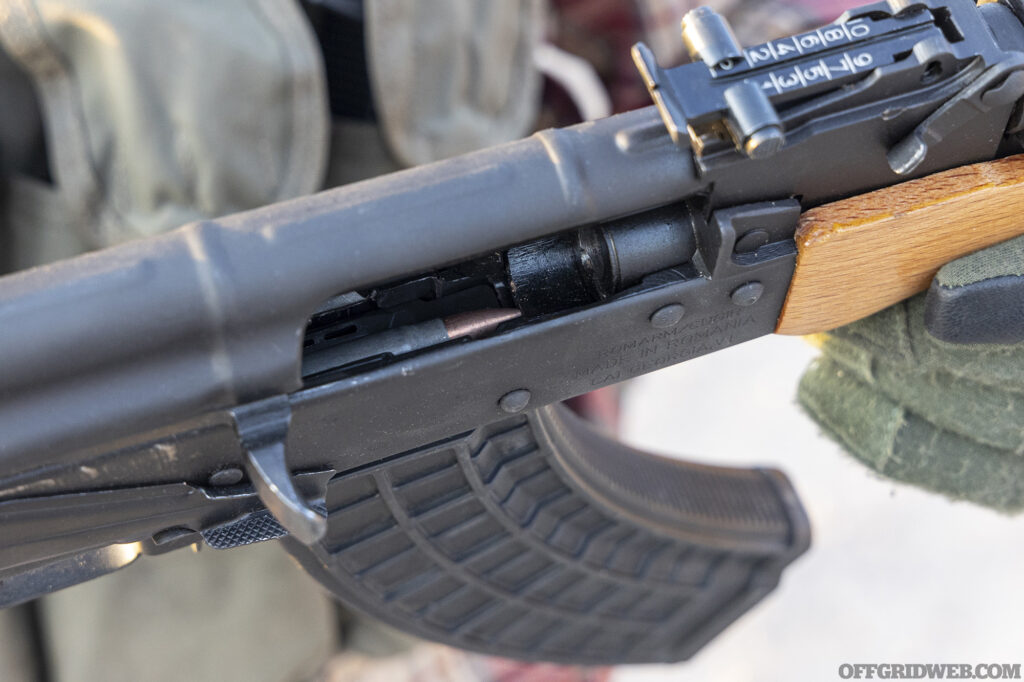
Above: The rifle failed to feed the last round from an XTech mag near the start of our break-in. This was an isolated incident.
Right off the bat, Josh checked headspace, as it’s possible for an AK to fire out of battery — meaning when the bolt isn’t fully seated to the chamber — which can cause serious issues. This WASR was found to have good headspace after having been appropriately gauged. Josh noted it had a tight chamber, which will come up later. It’s not uncommon to find a canted (i.e. tilted) front iron sight post on an imported AK, but thankfully, our WASR’s sights were just fine.
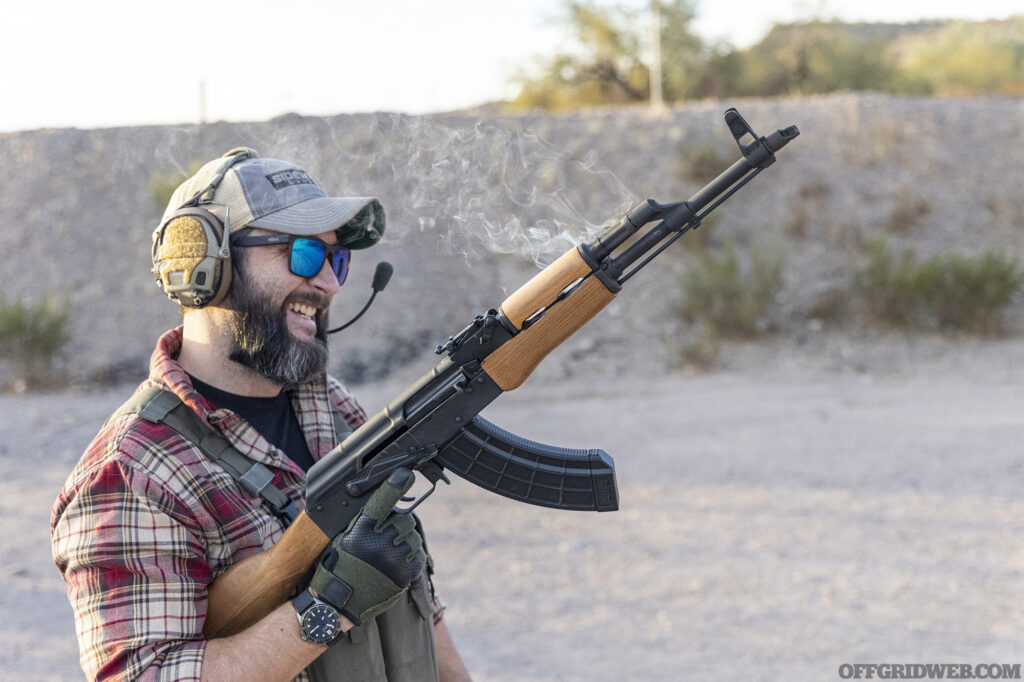
Above: After a few magazines of rapid fire, wisps of smoke began to appear around the barrel and gas tube.
The rest of the problems were purely cosmetic, but it should be noted that having some knowledge of the platform to make those distinctions is vital. The gas block was canted slightly, and the slant brake muzzle device doesn’t sit flush on the muzzle due to the detent retaining it being slightly too long (this could easily be fixed with a file). It looks like the bolt carrier had been dropped at some point before us getting a hold of it, since there was a small ding on the top of the carrier just forward of the recoil spring assembly. The safety was also remarkably tight even after bending it out, which is another common issue with many AKs. Any of those things could’ve looked worrisome to the untrained eye, so we’re glad Copperhead USA could take a look at it. Aside from the tight chamber, which Josh said would improve with time, our rifle was in great functional condition.
The wood furniture was nothing to write home about; in testing, it even manifested some unexpected issues we’ll discuss later. The trigger was a common spongy AK trigger with a tactile reset and a curved bow. Based on everything we saw, this wasn’t a cherry-picked rifle and is a good measure of what you can expect from a WASR-10.
At the Range
Testing was simple — the best thing you can do to test a new rifle is fire it. That shouldn’t be a controversial concept, yet to some, that might be the case. In particular, firing an AK with a tight chamber will help fit the bolt to the chamber, reducing that issue.
To prepare for our break-in range day, we loaded 500 rounds of Red Army Standard steel case 7.62×39 ammo into four different types of mags. These included US PALM AK30R magazines, XTech MAG47 polymer magazines with steel locking lugs, Magpul MOE magazines, and Bulgarian steel 30-round mags from GunMag Warehouse. We began by running one of each magazine through the rifle to ensure there weren’t any significant issues with that type. Again, with the wide range of specs and tolerances, not all AKs will like all magazines. Often, tuning magazines for a particular rifle may be required.
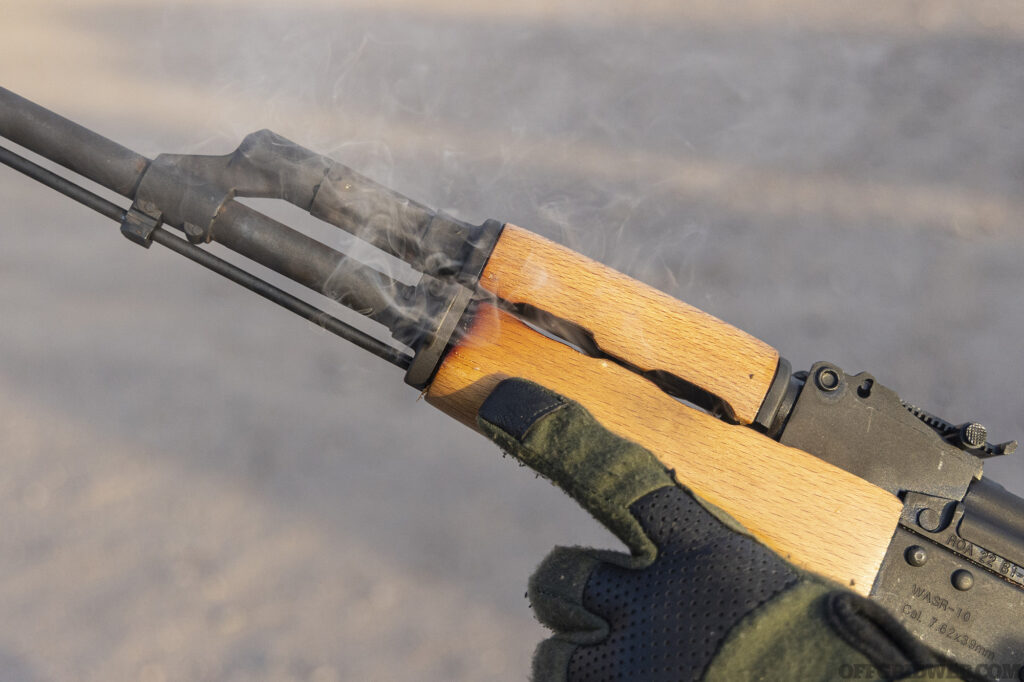
Above: Once the barrel and handguard retainer got hot enough, they began to burn the wood handguard, leaving blackened areas and small blisters in the finish.
The first mags of all four types presented no issues. However, the second XTech mag failed to feed on the last round, which also set the bullet back in the casing far enough to make us throw that round away. Other than that, the only magazine issue we experienced was difficulty seating them, which is a combination of needing to break in the mag release lever and the mags themselves. We’d rather mag lockup be too tight than too loose, anyway.
For those who’ve ever run an AK hard, you’ll know that the forward sling loop is a dicey place to find your fingers, as it transmits heat quickly. Our experience was no exception; after less than 200 rounds in rapid succession, the sling loop was painful to the touch. It’s also where heat started radiating into the handguard and melting the finish on the wood. Strangely, as the finish bubbled and melted near this contact point, it gave off a slight audible hiss and the distinct smell of pancakes. Once the finish melted off, it started puffing white smoke and smelling of burnt wood, as expected.
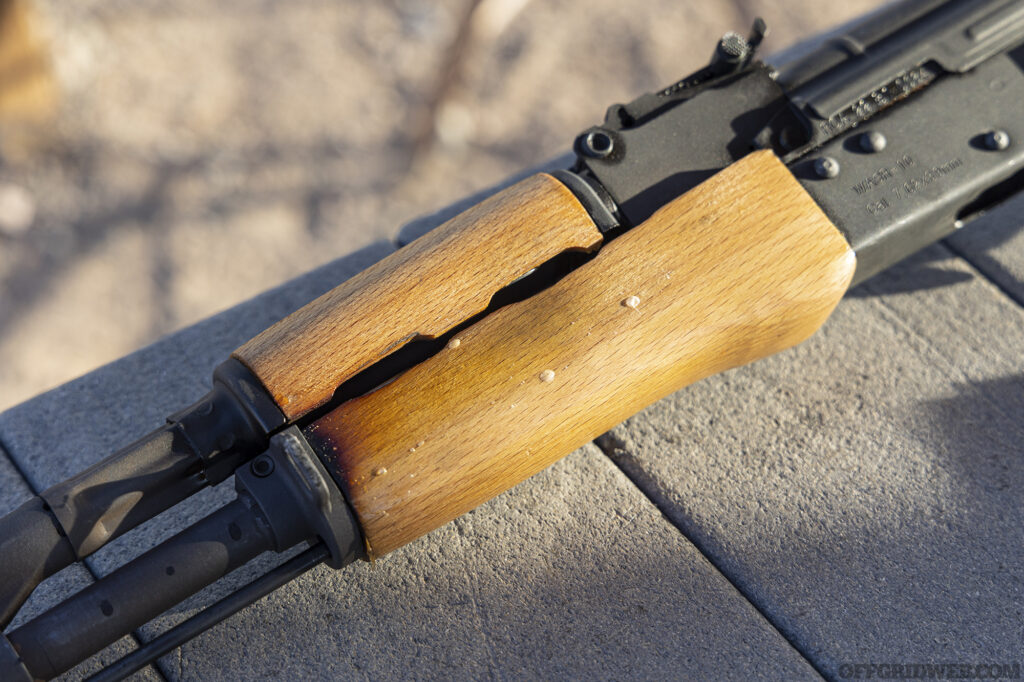
Around 250 rounds in, we experienced that tight chamber observation come to fruition. We had a round fire, and the steel case expand as usual; however, the extractor ripped the edge off the case, causing a failure to extract. This isn’t the fault of the bolt or extractor, it’s likely the tight chamber causing an issue. We grabbed a paint can opener — a surprisingly useful tool for prying out stuck cases — in an attempt to snag the edge of the stuck casing, but had no luck, meaning it was tightly expanded. It took a cleaning rod down the bore to punch out the damaged steel. We should note that the WASR doesn’t come with a cleaning rod, but we added one to our rifle from a spare parts bin.
Handling the Heat
As the rifle got hotter and hotter after several hundred rounds, it handled the wear remarkably well, with the finish experiencing minimal discoloration. In fact, the WASR-10 took everything we threw at it remarkably well. After dumping mag after mag into targets without more than a few seconds’ pause, the rifle’s entire barrel and handguard were rippling with heat and smoke, but it kept chugging away.
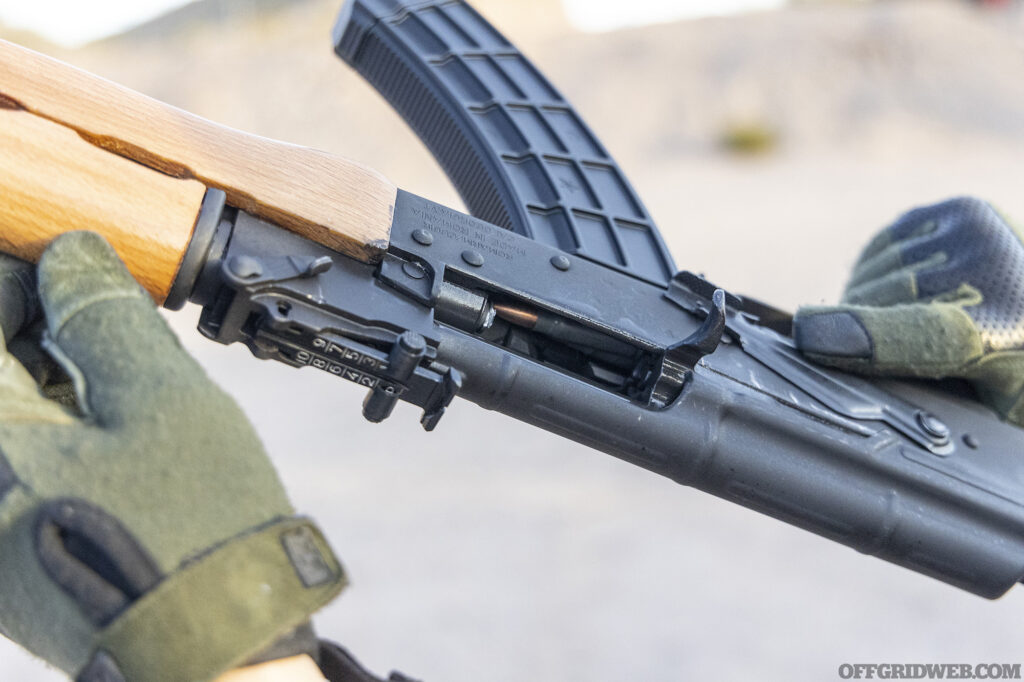
Above: The second malfunction occurred roughly halfway through our test. A case got stuck in the chamber, causing the extractor to rip off the case’s edge. Tapping it a few times with a cleaning rod knocked it out, and we went right back to shooting.
Towards the end of our 500-round test, we also noticed a ½-inch crack developing in the wood stock on the shooter’s side close to where it meets the rear trunnion. Considering the quality of the wood, it’s not unexpected to find defects, and this had no impact on the firing schedule. We were planning to replace the wood with a nicer laminate furniture set anyway, so the charred handguard and cracked stock only give us more reasons to do so.
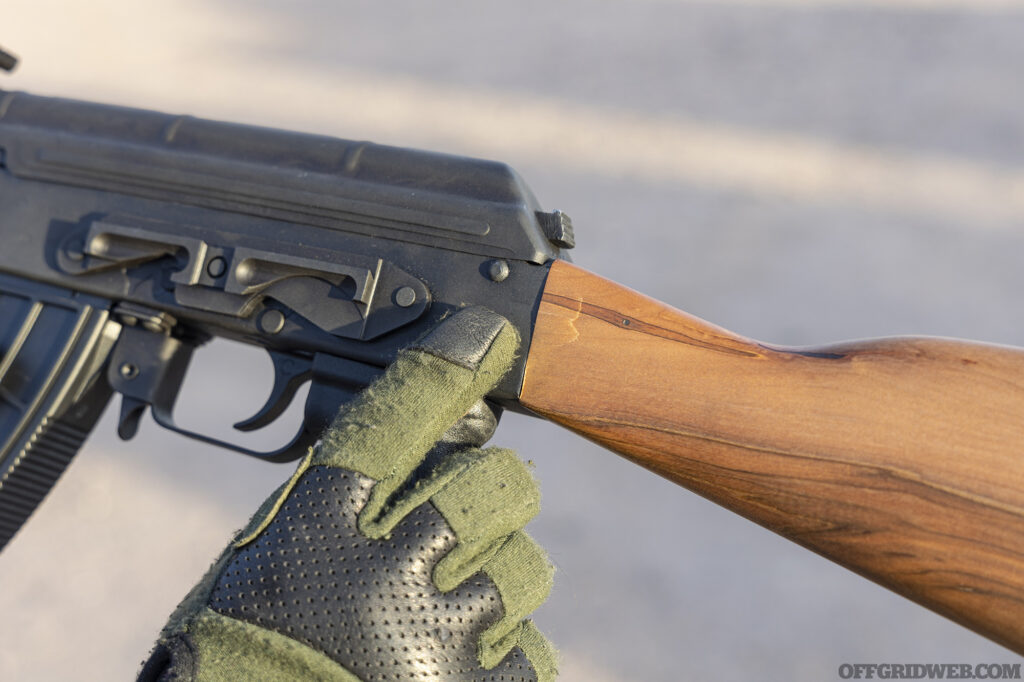
Above: At the end of the range session, we noticed one edge of the wood stock was starting to crack. The stock isn’t loose at all, so it’s solely cosmetic.
Except for the one misfeed, all the mags ran solidly and fed reliably. Consider this as a crucial consideration for buyers, as few will be willing to experiment with various magazines to find what your particular rifle likes best. Despite firing 500 rounds of steel-case ammo in less than 30 minutes during our aggressive break-in test, the WASR-10 held up remarkably well. Sure, it had a few minor issues out of the box, but most are purely cosmetic, and none would be insurmountable without a minor repair or continued use to break in the components.
Closing Thoughts
With an MSRP of $1,070, the WASR-10 from Century Arms isn’t the cheapest AK you can buy, but it still remains one of the best bang-for-your-buck options on the market. If you’re shopping for your first AK or simply want a do-all rifle that focuses on reliability and durability above all else, it’s worthy of your consideration.
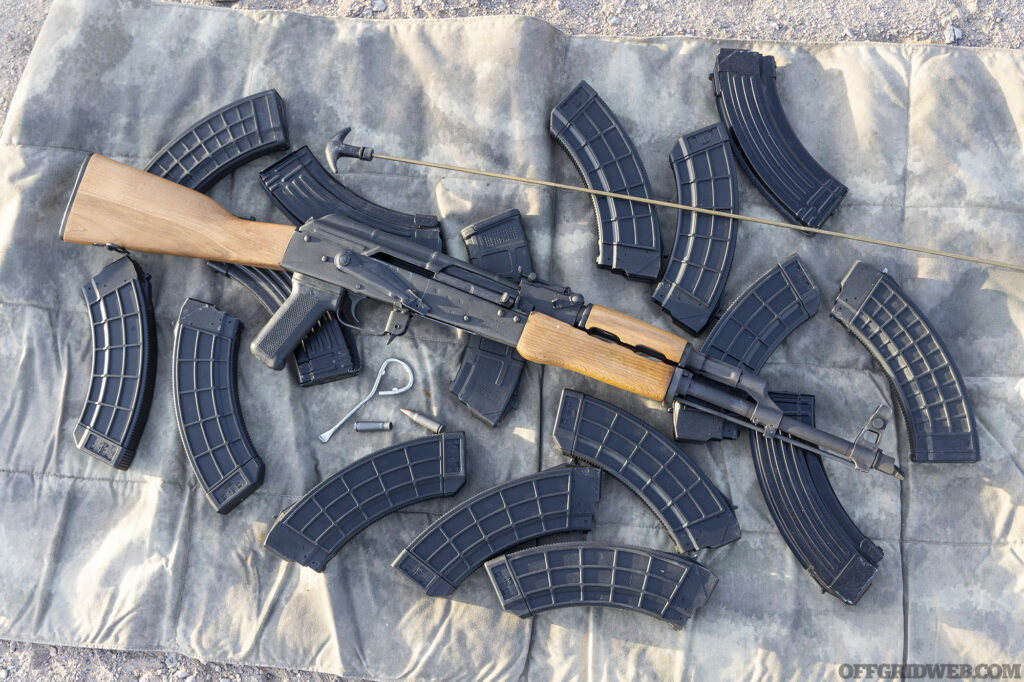
Above: We had no intention of giving our AK the white-glove treatment — we wanted to run it hard, just as Mikhail Kalashnikov intended. Our 500-round test is only the start of its service life, and we’d say it performed admirably so far.
If, on the other hand, you expect an immaculate finish, 1 MOA accuracy, and the ability to add a modern sighting system without purchasing an aftermarket mount, you should look not only at a different AK but also at a different platform entirely. That being said, you’d be surprised what you can squeeze out of the platform, especially with the help of a gunsmith specializing in AKs.
AKs continue to be a staple of the American firearms market even as prices climb on what might be a boutique firearm in the not-too-distant future. If you’re looking for an affordable, reliable, and fun-to-shoot AK, you’d be hard-pressed to do better than the WASR-10 from Century. As it turns out, its reputation is well-deserved.
Sources
Read More
Subscribe to Recoil Offgrid's free newsletter for more content like this.
Editor's Note: This article has been modified from its original print version for the web.
The post Affordable AK: The WASR-10 appeared first on RECOIL OFFGRID.
By: Patrick Diedrich
Title: Affordable AK: The WASR-10
Sourced From: www.offgridweb.com/gear/affordable-ak-the-wasr-10/
Published Date: Fri, 01 Mar 2024 12:00:19 +0000
------------------------
Did you miss our previous article...
https://bushcrafttips.com/bushcraft-news/whats-the-maximum-cb-radio-range
 What is BushcraftSurvival SkillsToolsVideosBushcraft CampsBushcraft KitsBushcraft ProjectsPrivacy PolicyTerms And Conditions
What is BushcraftSurvival SkillsToolsVideosBushcraft CampsBushcraft KitsBushcraft ProjectsPrivacy PolicyTerms And Conditions
